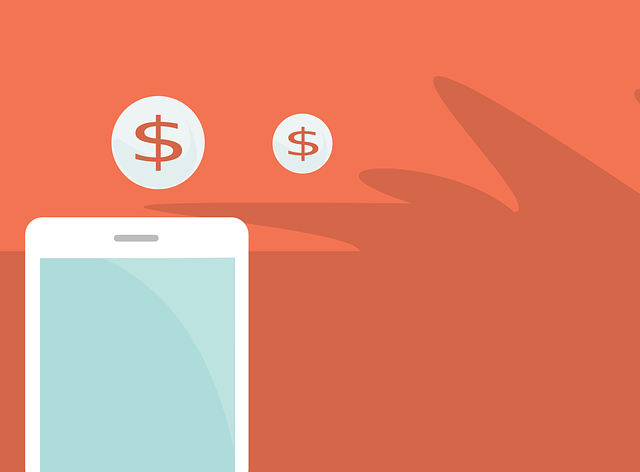MailChimp vs. ConvertKit
Whether you're a beginner in digital marketing or you've been in the business for a while, the importance of email campaigns cannot be overlooked. Nowadays, there is a lot of emphasis on chatbots, Instagram and Facebook ads, and other new methods to reach followers. But did you know that for every $1 spent on email marketing, you can expect a $38 return on your investment?
Two platforms that keep coming up in the argument for the best email marketing company are MailChimp and ConvertKit. MailChimp has been around for nearly two decades, while ConvertKit is newer to the market. Yet ConvertKit has been able to convince a generous number of loyal MailChimp customers to switch providers.
Which one is better? There are multiple circumstances to consider, such as any budget constraints your business may have, as well as the volume of emails you would like to send each month. Let's dive in.
Overview of MailChimp
MailChimp was founded in 2001 by Ben Chestnut and Dan Kurzius as an alternative to their large, corporate-focused web design agency, the Rocket Science Group. They wanted to give small businesses the technology and high-end tools to empower and help the business grow. In 2007, they called it quits on the web design agency and focused entirely on MailChimp.
As the name suggests, MailChimp offers email marketing services, but they also have many all-in-one tools such as website builders and detailed campaign analytics. Their monthly marketing platform subscriptions range from free up to $299 per month, or you can go the transactional email route, which allows you to pay based on the volume of emails you send out.
Overview of ConvertKit
In January of 2013, Nathan Barry founded ConvertKit as an email marketing platform designed specifically for creators. A creator can be anyone from a painter, poet, YouTuber, artist, blogger, photographer, or teacher; if they're creating or writing things and sharing them online, then they fit the bill.
They've recently caught up to MailChimp by offering an eCommerce design tool where creators can sell tutorials, music, presets, or set up subscriptions for premium newsletters and other digital content. Their monthly subscriptions start from free, while the other choices change in price depending on how many subscribers you have. They offer two months free if you pay annually.
Mailchimp vs ConvertKit
Both agencies seem very similar from the outside-in, but there's a multitude of differences between them. Let's get into the details you need to know.
Price
If you're on a monthly budget constraint or just trying to save some extra money, then the first thing you need to consider is the price differences between MailChimp vs. ConvertKit.
ConvertKit offers a free 14-day trial to try out the features offered on their paid plans, while MailChimp only allows you to test out the free subscription option until you decide to upgrade. ConvertKit also gives you a free migration from any platform you're using with their paid plans, which saves you the trouble of transferring your data manually.
Free Account
Both MailChimp and Convertkit offer a free membership option. Both plans are similar, but the major difference is that MailChimp allows you to manage up to 2,000 contacts while ConvertKit limits you to 1,000. If you have a successful referral through ConvertKit, though, both you and your referral receive the allowance for 100 more subscribers, and so on.
With both free plans, you receive a sponsored domain and basic creative tools to communicate with potential clients and test new ideas.
Paid Monthly Subscriptions
MailChimp has three paid subscription options: Essentials, Standard, and Premium. Essentials start at $9.99 per month, Standard at $14.99, and Premium at $299. Each plan scales based on the number of subscribers you're managing. For example, if you're campaigning to 10,000 subscribers, then your monthly price would change to $78.99 for essentials and $105 for standard.
The MailChimp essentials plan is ideal for frequent email senders who would like access to upgraded features and around-the-clock support. The standard plan is the most popular out of the four choices. It has data-driven optimization tools to help business owners and marketing agents monitor their growth and target specific areas that need to be improved.
ConvertKit has two paid subscription options: Creator and Creator Pro. Creator starts at $29 per month and Creator Pro at $59. If you have 10,000 subscribers, then the monthly prices would scale to $119 and $167 per month, respectively. If you pay annually, then you receive two months free.
MailChimp's premium subscription seems steep at the starting price of $299 per month for 10,000 contacts, which is why it's targeted at a smaller audience. Their premium subscription is specifically engineered for marketing pros who would like more customization and access to incredibly detailed analytics, which many businesses don't need. Their premium subscription is also the only monthly account that receives phone service instead of chat and email support.
ConvertKit's competition to MailChimp's premium subscription is its creative pro account. For 10,000 subscribers, you can expect to pay $167 per month. The features are not as in-depth and customizable as MailChimp. However, you still gain access to impressive tools, including custom Facebook audiences, subscriber engagement scoring, and a newsletter referral system.
Transactional Email
As opposed to the monthly subscription options, MailChimp offers a transactional email method designed for developers. You purchase blocks and only need to buy more once your original purchase runs out.
A block is a credit for 25,000 emails. Purchasing anywhere from 1 to 20 blocks (up to 500,000 emails per month) comes out to $20 per block while purchasing 41 to 80 blocks (1 million to 2 million emails each month) cuts it down to $18 per block, and so on—the price decreases with the more blocks you purchase.
With transactional emails, you receive access to scalable analytics, global infrastructure, developer guides, and API reference. ConvertKit does not offer a competing choice to transactional emails, but their free plan allows you to send unlimited emails (although you are still limited to 1,000 subscribers).
List Management
The trademark of a fluent email campaign is efficient list management, so you need the tools to help you do that.
MailChimp allows you to create lists where you can entirely separate groups of contacts from others, which is ideal for managing multiple clients or products. One downfall to MailChimp's list management system is that you will be charged for any duplicate emails that show up on multiple lists.
If you aren't juggling multiple content streams, then you can easily manage all your contacts on one single list with MailChimp. You have the option to assign them tags, organize them based on the sign-up method (website or referral, for example), or group them based on interests (determined when they signed up).
ConvertKit does not offer list management. Instead, whenever you upload contacts, they will go to the same place. However, you can assign contacts to a sequence, form, or tag as a way to organize them. You also have the option to create groups of contacts with similar aspects regardless of if they are in the same sequence.
ConvertKit will not charge you for repeat subscribers, and their auto deduplication tool assures that the same email will never be sent to the same subscriber twice, no matter how many segments they're a part of.
Ease-of-Use and Design
Nothing steers paying customers away from a platform faster than having a chaotic, difficult-to-use interface. Both companies pride themselves on having an easy-to-use system, so let's put those claims to the test.
MailChimp gives you two jumping-off points before sending an email. You can choose between selecting contacts first or jump into designing and writing the email. Their interface is intuitive and simple, which holds true even once you dive into the editor.
They use a drag-and-drop editor that allows you to duplicate, rearrange, and delete blocks without any trouble. If you prefer to insert your own custom code, you can use one of the blocks to do so, but most users do fine with the preset templates and features available already.
Speaking of preset templates, MailChimp has over 100 themed, customizable designs that you can choose from when designing your emails. This includes newsletters, event invites, holiday emails, and more.
ConvertKit's interface is similarly easy to navigate, but this is because the editor is slightly underwhelming. They do not offer a drag-and-drop display like MailChimp; they claim that templates like that can actually hurt your customer engagement, and you can read the article about it written by founder Nathan Barry here.
This means that ConvertKit instead places emphasis on text-based editing, so you're restrained to formatting text (bolding, italicizing, etc.) for your emails without any visual aspects. You can still add images and different colors to establish your brand, though. CovertKit offers three different styles of emails that you can choose from: text only, classic, and modern.
In terms of landing pages, though, ConvertKit offers 18 fully-customizable landing pages that your subscribers will interact with on your site as well as after engaging with your emails.
While both platforms offer slightly different features in their editors, both are easy to use and won't hinder your marketing plan due to complicated navigation or format. Both home interfaces are also simplistic and easy to navigate regardless of the task you're performing, and contacting support is a breeze. If you like a high degree of customization, then you may be leaning towards MailChimp.
E-Commerce
Choosing a marketing platform when you're selling products online can also be a tricky task.
ConvertKit can only integrate digital sales into their websites, meaning that you cannot sell and ship physical products to customers. However, this is great for bloggers who like to sell premium newsletters or crafters who share their yarn and crochet patterns. If you're selling physical products, then your only choice out of the two would be MailChimp.
MailChimp also has other features that ConvertKit doesn't, such as letting you send abandoned cart reminders to customers and time-gated emails that send out a certain amount of time after purchase. You can also easily view your return-on-investment in one chart that compares the number of clicks versus the number of purchases you received.
App Integration
Apps and other website integration are important, especially if you're going to be marketing across multiple platforms and using a variety of tools to grow your business. You don't want everything to be condensed to one website because that will just hinder your ability to reach new customers and subscribers.
Both platforms have integration capability with hundreds of different programs and platforms. These include Squarespace, Shopify, and Photoshop, just to name a few. One thing that ConvertKit offers is the ability to design your own integration to work with their platform, as long as you can work with coding.
Deliverability
If you send an email, the goal is that it reaches your subscriber's inbox, right? Sometimes, email marketing platforms can advertise a high deliverability rate and guarantee your newsletter won't end up in the spam folder, but it does anyway.
Both MailChimp and ConvertKit have been measured on their overall deliverability stats. From July 2019 to September 2023, these were the results:
- Overall Deliverability
- MailChimp: 87.7%
- ConvertKit: 82.1%
- Primary Inbox
- MailChimp: 79.5%
- ConvertKit: $73.8%
- Spam
- MailChimp: 11.1%
- ConvertKit: 13.4%
- Undelivered
- MailChimp: 1%
- ConvertKit: 4.3%
- Sender Score
- MailChimp: 97.7%
- ConvertKit: 96.3%
As you can see, MailChimp wins in every category in terms of deliverability, but this isn't a deal-breaker for ConvertKit. Emails can be bounced for a variety of reasons, such as not making it easy to unsubscribe or sending from a sponsored domain.
Final Verdict: MailChimp vs. ConvertKit
Even after covering all the detailed ins-and-outs of both email marketing platforms, it's extremely difficult to pin a clear winner. The truth is that both platforms are meant for different users; ConvertKit is geared primarily towards bloggers, while MailChimp is the go-to for many ecommerce businesses.
Of course, price is important. We like that ConvertKit gives you two months free if you pay annually, but you'll be locked in with no chance of canceling your plan. It's hard to gauge the actual price difference between the two because they offer a multitude of different options, such as MailChimp's decision to offer a monthly subscription or transactional emails, which lets you purchase blocks of email allowances as you go.
If you're attracted to hundreds of themed templates to design your emails, then MailChimp may be the best choice for you. Another reason you may go with MailChimp is if you're an ecommerce business. While ConvertKit gives you the option to sell products, this is limited to digitized items like tutorials and templates. MailChimp focuses a lot on branding, while ConvertKit is dedicated to making the most out of your mailing list.
In fact, Nathan Barry, the founder of ConvertKit, even published a blog with a list of reasons you should not switch from MailChimp to ConvertKit (yes, you read that right). This speaks volumes about the level of customer service that ConvertKit offers to its users. They would rather have happy customers than a paying, unsatisfied customer who does not receive the right services for their business.
Frequently Asked Questions
Here is a look into common concerns and questions customers have when considering MailChimp vs. ConvertKit.
Is MailChimp Cheaper Than ConvertKit?
As we mentioned above, it can be hard to gauge the actual price difference between the two platforms because everyone will be paying for a different range of services.
That being said, MailChimp's standard subscription starts at $79.99 per month with 5,000 subscribers, while ConvertKit's creator subscription (similar to the standard) is also $79 per month. MailChimp requires you to pay extra if you exceed the plan's limits on subscribers and monthly email sends, while ConvertKit offers unlimited email sending. ConvertKit also does not charge you extra for duplicate subscribers across multiple lists like MailChimp does.
Long story short, both platforms are competitively priced, but you may pay more depending on the volume of business and marketing you'll be conducting.
Are There Any Alternatives to MailChimp and ConvertKit?
There are plenty of other email marketing platforms, but MailChimp and ConvertKit are definitely dominating the field compared to their alternatives. Other companies you can check out include GetResponse, MailerLite, or ActiveCampaign.
Will ConvertKit Give Better Results?
Neither ConvertKit nor MailChimp can guarantee that their platform will grow your business overnight and shower you in new subscribers. Both companies simply give you a set of tools that you can use as you see fit to engage with new customers and share your brand.
Sometimes you might have great luck and see a surge in new sales because of a recent email campaign, and other times you might fall flat because your strategy failed. Regardless, ConvertKit will not provide better results than MailChimp and vice versa. It all depends on how you engage with the tools provided for you.













